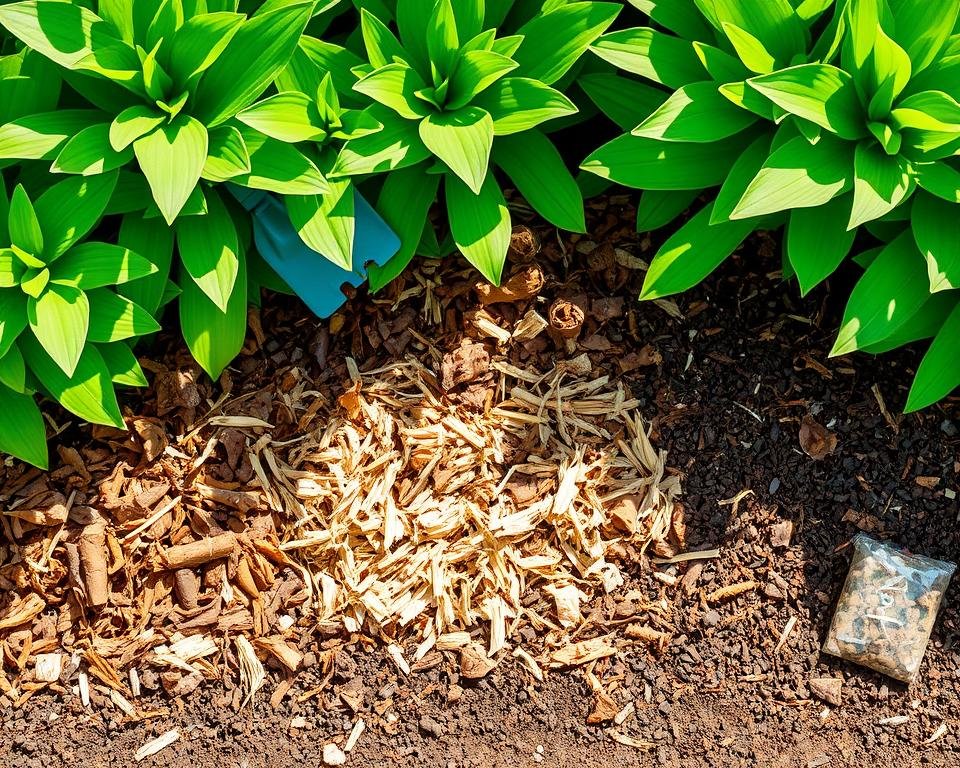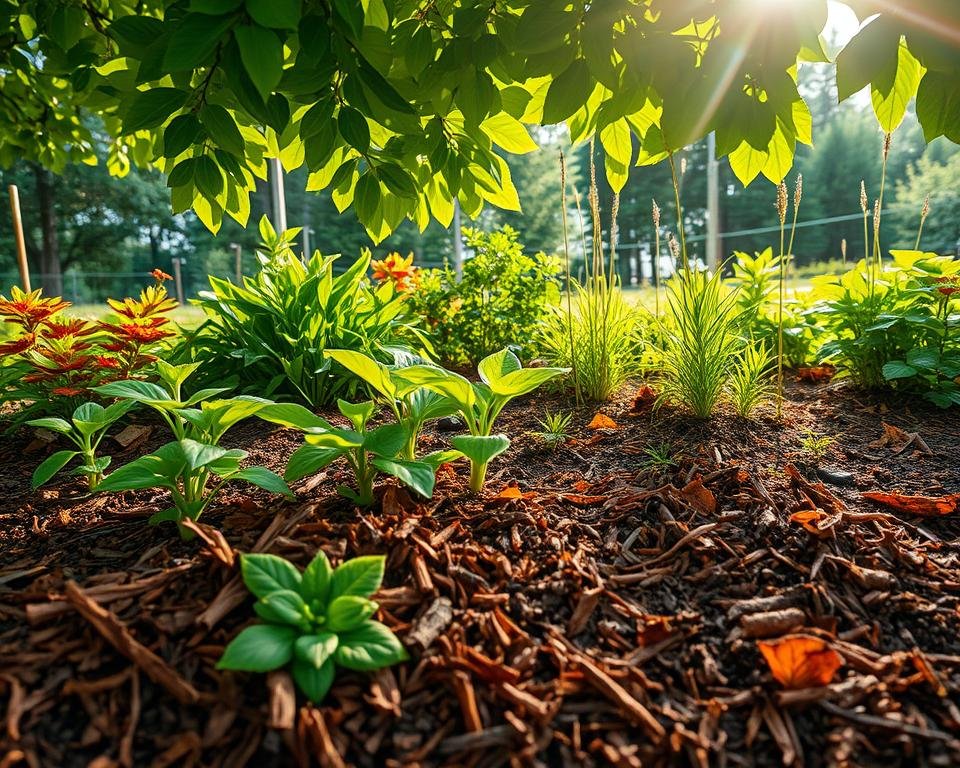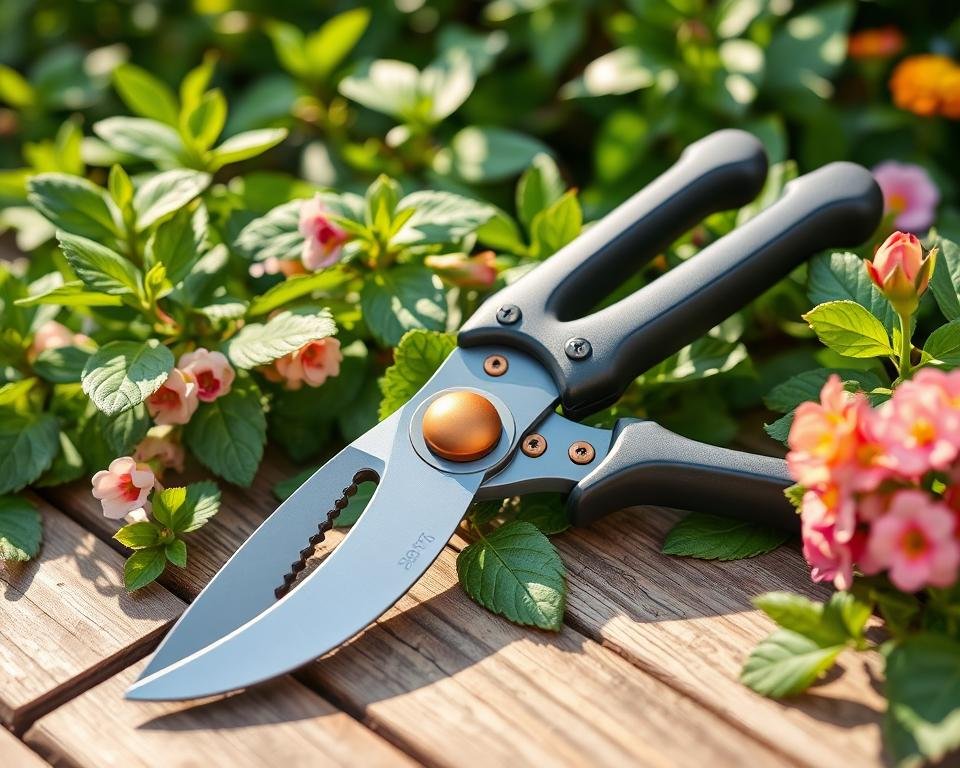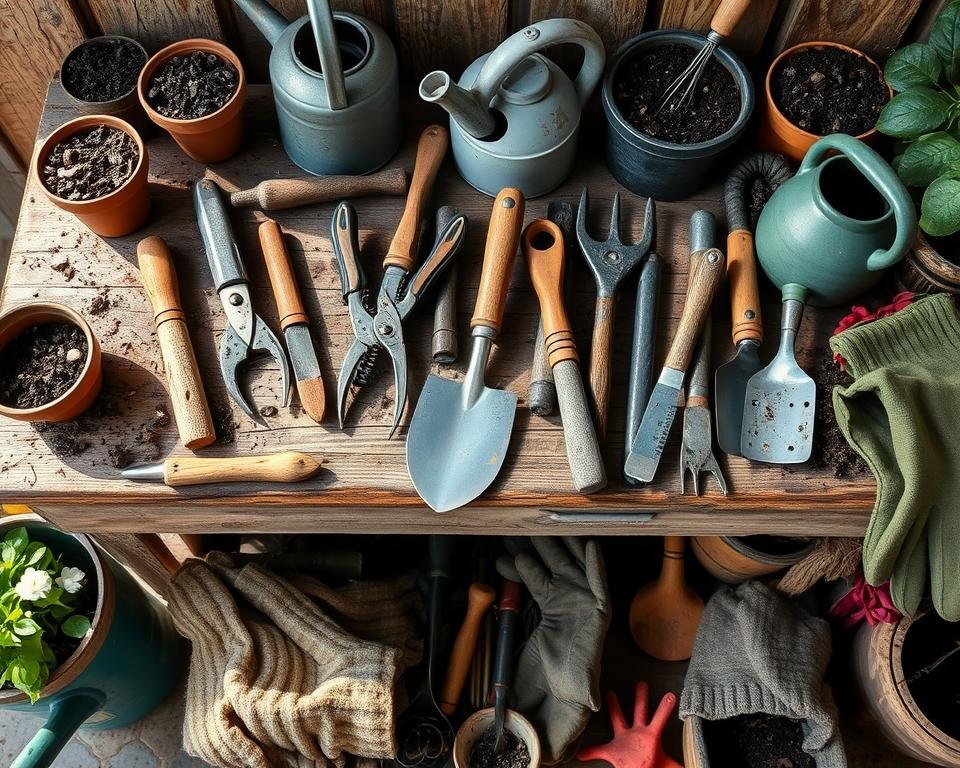Struggling with pesky weeds in your garden? The solution might be just a few inches beneath the soil’s surface. Mulching, the art of covering the ground with a protective layer, can be a game-changer in the battle against weeds. But what are the best mulching techniques, and how can they transform your garden into a lush, low-maintenance oasis? Let’s dive in and explore the secrets to a weed-free paradise.
Have you ever wondered why some gardens seem to thrive effortlessly, while others are constantly overrun by weeds? The answer may lie in the simple yet powerful act of mulching. But what exactly is mulching, and how does it work its magic?
What is Mulching?
Mulching is when you put a layer of material on the soil. This layer can be organic or inorganic. Each type has its own benefits. The main goal of mulch is to stop weeds, keep moisture, and make the soil better.
Understanding the Purpose of Mulch
Mulch does a lot for your garden. It keeps the soil moist, so you don’t have to water as much. It also stops weeds from growing, which means your plants get more water and nutrients.
As mulch breaks down, it makes the soil better. This helps your plants grow stronger and healthier.
Types of Mulch Materials
- Organic mulches, like wood chips, bark, leaves, and straw, give nutrients as they break down.
- Inorganic mulches, such as gravel, stones, and rubber, last longer but don’t help the soil as much.
Choosing the right mulch depends on what you want for your garden. Organic mulches are great for improving soil. Inorganic mulches work well for certain designs or where weeds are a big problem.
Best Mulching Techniques
Starting a weed-free, low-maintenance garden begins with mastering mulching. The right mulching techniques make your outdoor space sustainable and beautiful. Let’s explore the key steps for applying mulch correctly.
The perfect mulch thickness is 2-4 inches. This keeps moisture in, stops weeds, and warms the soil. When you apply mulch, spread it evenly around plants and trees. Make sure to leave a small gap around stems to avoid rot.
- Spread the mulch in a uniform layer, ensuring it extends to the drip line of the plants or trees.
- Avoid piling mulch against the trunks or stems, as this can lead to decay and other issues.
- Replenish the mulch layer as needed, typically once or twice a year, to maintain the optimal depth.
Using organic materials like wood chips, shredded bark, or leaves is a top mulching technique. These natural mulches make your garden look great. They also break down over time, adding nutrients to the soil.

By using these mulching techniques, you’ll have a garden that’s weed-free and easy to care for. Mulch is a powerful tool for a healthy, beautiful garden.
Benefits of Proper Mulching
Mulching your garden offers many benefits, making it key for easy garden care. It helps keep the soil moist and stops weeds from growing.
Moisture Retention
Mulch covers the soil, saving water by stopping it from evaporating. This means you water your plants less often. It also keeps your plants healthy by giving them the moisture they need.
Weed Suppression
Mulch stops weeds from growing by blocking sunlight. This saves you time and effort in keeping your garden weed-free. It also lets your plants grow better without competition.
Using mulch can make your garden lush and easy to care for. It keeps the soil moist and stops weeds. This simple practice can turn your garden into a peaceful oasis.

Choosing the Right Mulch
When mulching your garden, you can pick between organic and inorganic materials. Each type has its own benefits. The right choice depends on your gardening needs and what you like.
Organic vs. Inorganic Mulches
Organic mulches come from nature, like wood chips, shredded bark, or leaves. They break down, making the soil better and feeding your plants. They’re great for sustainable gardening, helping your soil and the environment.
Inorganic mulches are made of things like gravel, rocks, or synthetic fabrics. They last longer but don’t improve the soil like organic mulches do. They’re good for looks or controlling weeds and keeping moisture in.
Think about your climate, plants, and garden look when picking mulch. The right mulch makes your garden beautiful and easy to care for.
FAQ
What is the purpose of mulching?
Mulching helps keep weeds away, holds moisture, and makes soil better. It covers the soil, stopping weeds from growing by blocking sunlight.
What are the different types of mulch materials?
You can use organic mulches like wood chips, bark, leaves, and straw. Or, you can choose inorganic options like gravel and stone. Each has its own good and bad points, depending on your garden needs.
How do I apply mulch properly?
Spread 2-4 inches of mulch around your plants, but don’t touch the stems. Make sure it’s spread out evenly. Add more as needed to keep the right thickness.
What are the benefits of proper mulching?
Good mulching keeps the soil moist, stops weeds, and makes the soil healthier. It saves water by reducing evaporation and blocks sunlight to stop weeds from growing.
How do I choose the right mulch for my garden?
Think about the mulch’s look, cost, and if it’s good for the environment. Organic mulches like wood chips or leaves can make the soil better over time. But, inorganic mulches like gravel last longer but don’t help the soil as much.

